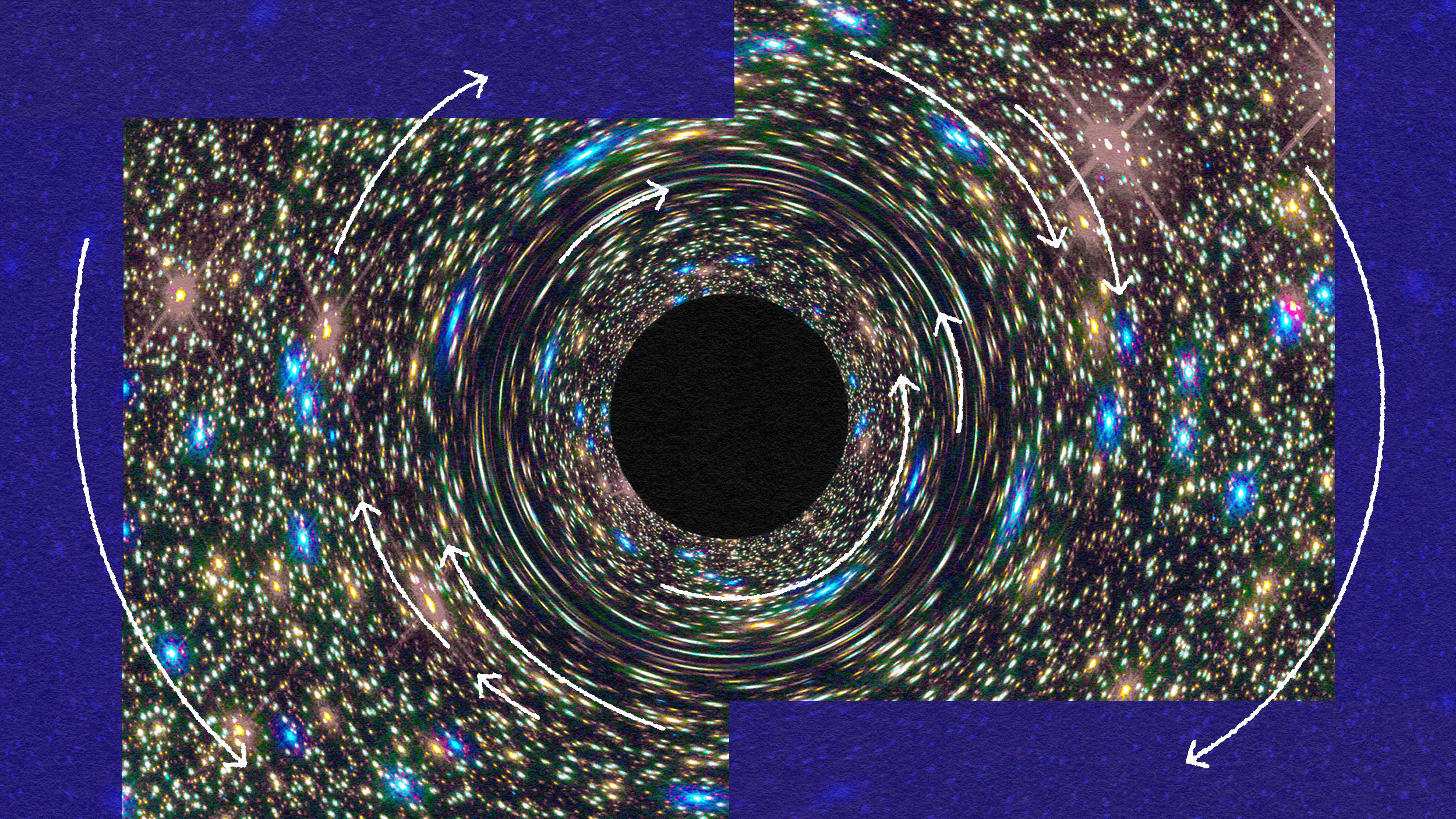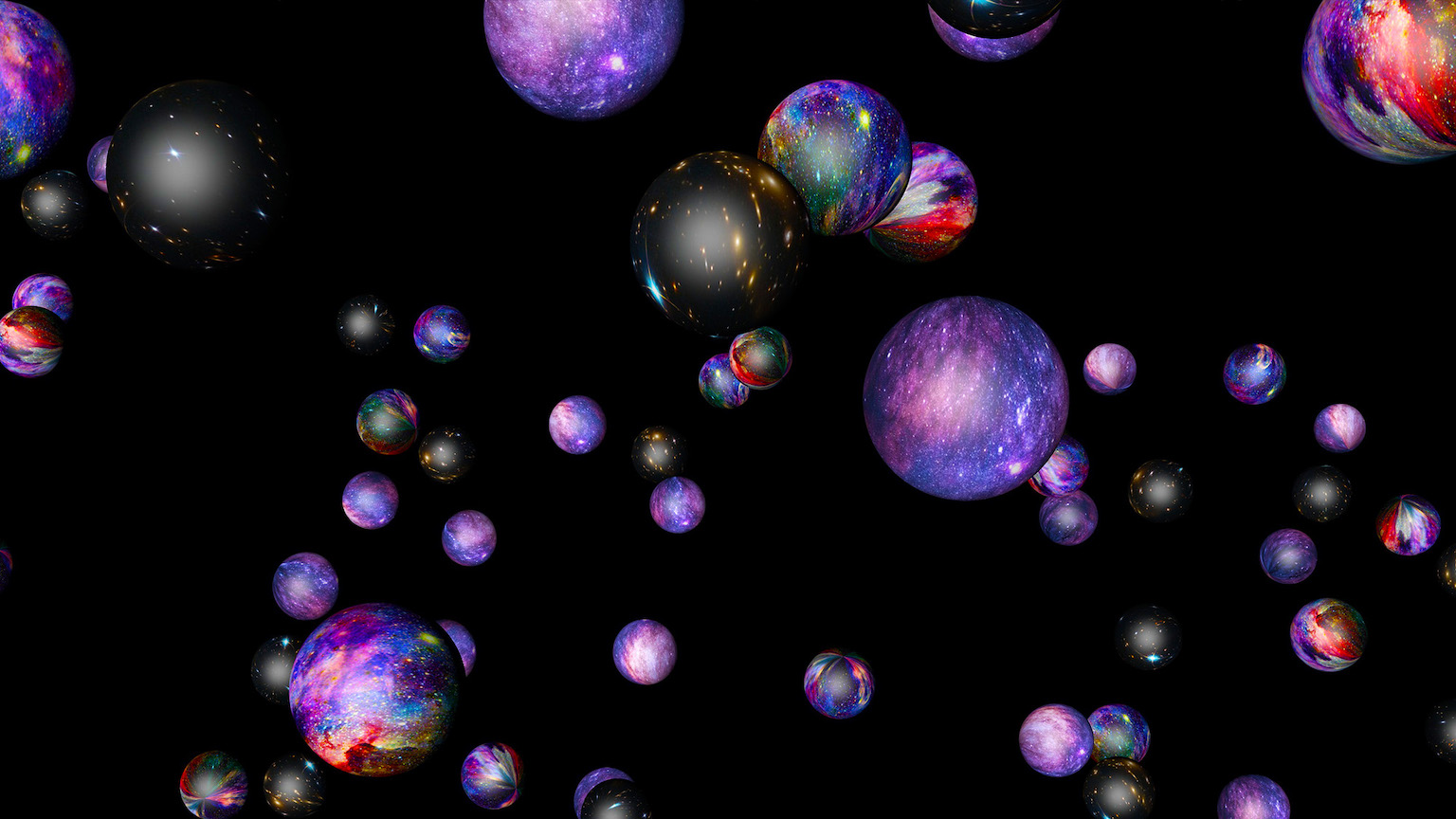Did Time Have A Beginning?
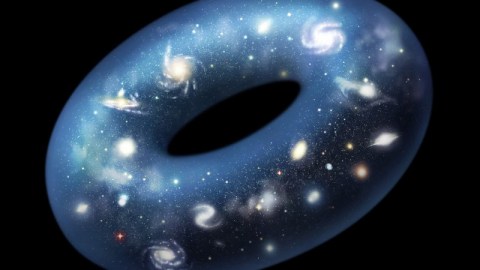
When we think about the birth of the Universe, was time already in place?
When we look at the Universe today, we know with an extraordinary amount of scientific certainty that it wasn’t simply created as-is, but evolved to its present configuration over billions of years of cosmic history. We can use what we see today, both nearby and at great distances, to extrapolate what the Universe was like a long time ago, and to understand how it came to be the way it is now.
When we think about our cosmic origins, then, it’s only human to ask the most fundamental of all possible questions: where did this all come from? It’s been more than half a century since the first robust and unique predictions of the Big Bang were confirmed, leading to our modern picture of a Universe that began from a hot, dense state some 13.8 billion years ago. But in our quest for the beginning, we know already that time couldn’t have started with the Big Bang. In fact, it might not have had a beginning at all.
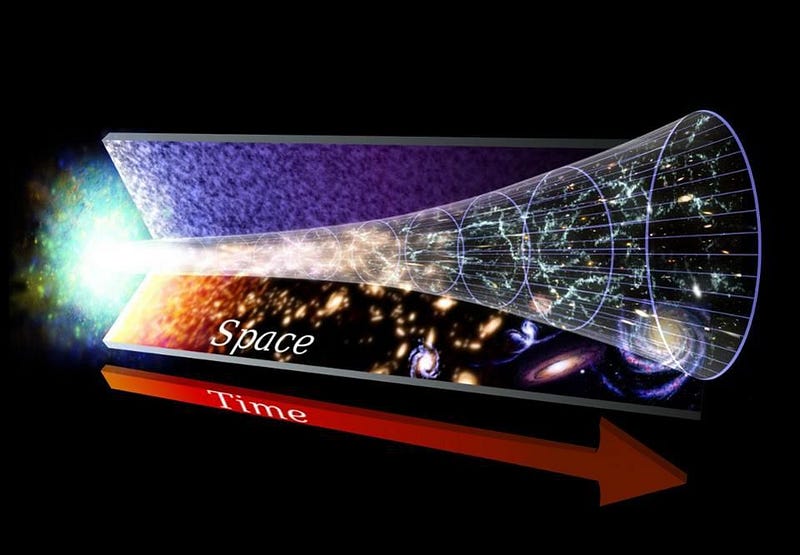
Whenever we think about anything, we apply our very human logic to it. If we want to know where the Big Bang came from, we describe it in the best terms we can, and then theorize about what could have caused it and set it up. We look for evidence to help us understand the Big Bang’s beginnings. After all, that’s where everything comes from: from the process that gave it its start.
But this assumes something that may not be true about our Universe: that it actually had a beginning. For a long time, scientifically, we didn’t know whether this was true or not. Did the Universe have a beginning, or a time before which nothing existed? Or did the Universe exist for an eternity, like an infinite line extending in both directions? Or, quite possibly, is our Universe cyclic like the circumference of a circle, where it repeats over and over indefinitely?
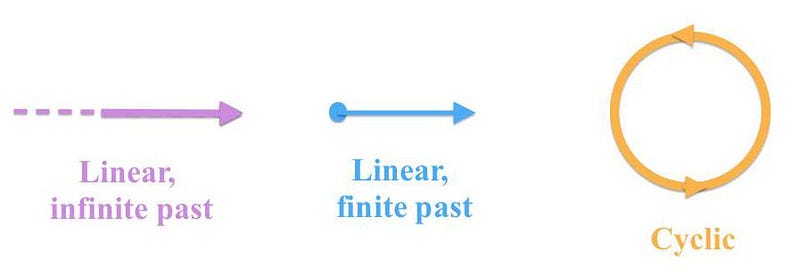
For a time, there were multiple competing ideas which were all consistent with the observations we had.
- An expanding Universe could have originated from a singular point — an event in spacetime — where all of space and time emerged from a singularity.
- The Universe could be expanding today because it was contracting in the past, and will contract again in the future, presenting an oscillating solution.
- Finally, the expanding Universe could have been an eternal state, where space is expanding now and always had been and always would be, where new matter is continuously created to keep the density constant.
These three examples represent the three major options: the Universe had a singular beginning, the Universe is cyclical in nature, or the Universe has always existed. In the 1960s, however, a low-level of microwave radiation was found everywhere across the sky, changing the story forever.
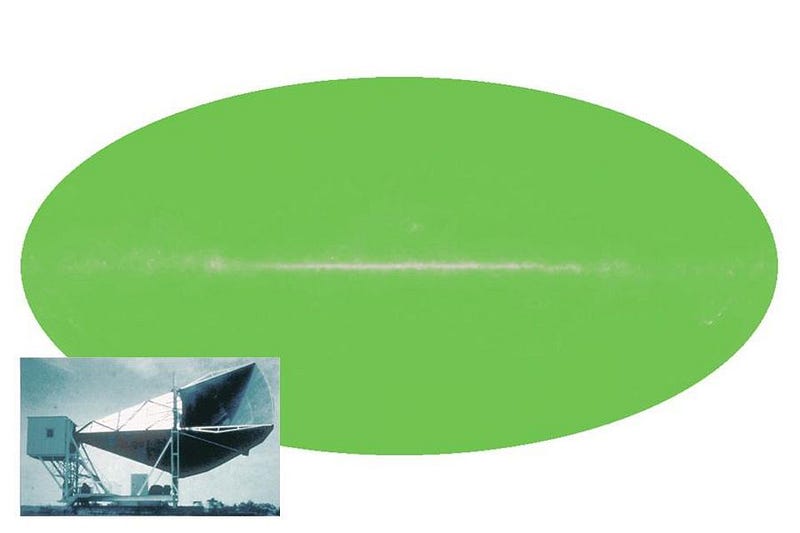
This radiation wasn’t just the same magnitude everywhere, but also the same in all directions. At just a few degrees above absolute zero, it was consistent with the Universe emerging from an earlier, hot dense state, and cooling as it expanded.
As improved technology and novel techniques led to better data, we learned that the spectrum of this radiation had a particular shape: that of a near-perfect blackbody. A blackbody is what you get if you have a perfect absorber of radiation heated up to a certain specific temperature. If the Universe expands and cools without changing its entropy (i.e., adiabatically), something that starts off with a blackbody spectrum will remain a blackbody, even as it cools. This radiation was not only consistent with being the leftover glow from the Big Bang, but was inconsistent with alternatives like tired light or reflected starlight.
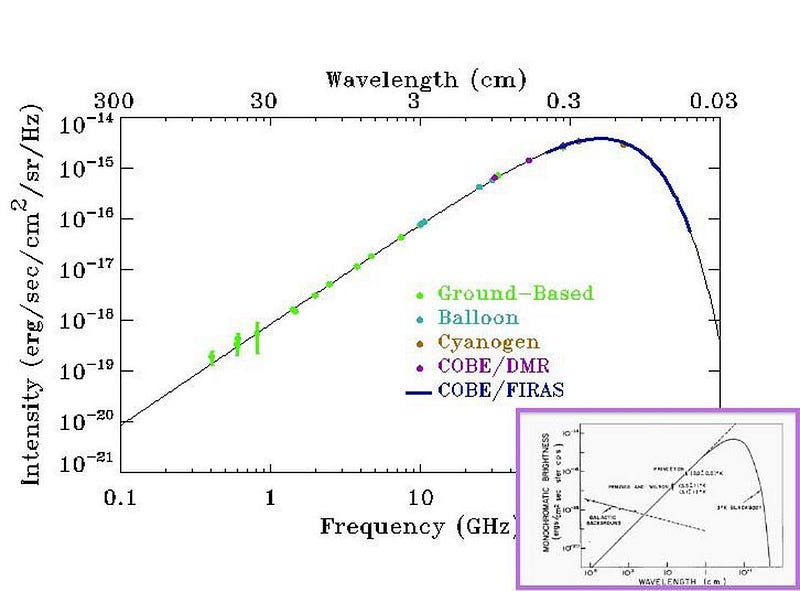
According to the Big Bang, the Universe was hotter, denser, more uniform and smaller in the past. It only has the properties we see today because it’s been expanding, cooling, and experiencing the influence of gravitation for so long. Because the wavelength of radiation stretches as the Universe expands, a smaller Universe should have had radiation with shorter wavelengths, meaning it had higher energies and greater temperatures.
Billions of years ago, it was once so hot that even neutral atoms couldn’t form without being blasted apart. Even earlier than that, today’s microwave radiation were so energetic that they dominated over matter as far as the Universe’s energy content was concerned. At even earlier times, atomic nuclei were instantly blasted apart, and at still earlier ones, we couldn’t even create stable protons and neutrons.
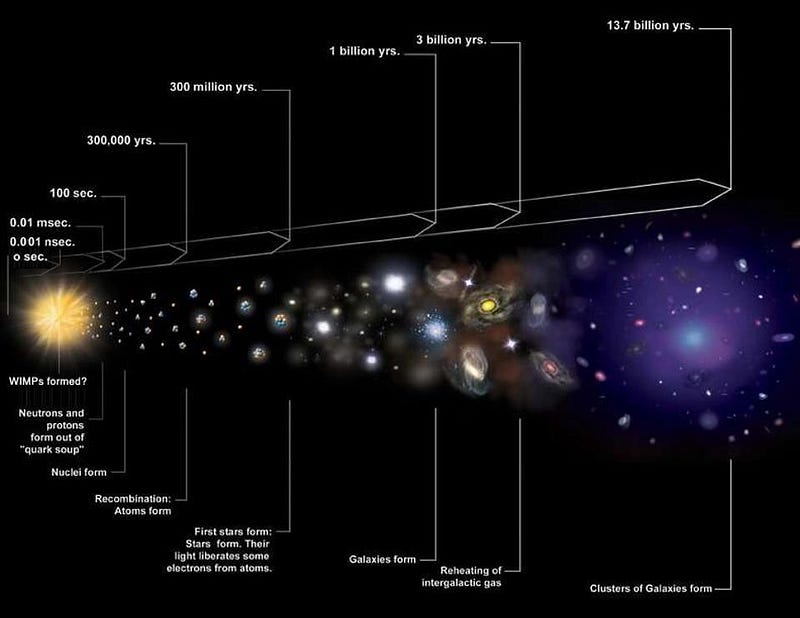
If we extrapolate all the way back, to arbitrarily hot temperatures, small distances, and high densities, you’d intuit that this would truly equate to the beginning. If you were willing to run the clock backwards as far as you could, all of the space that makes up our visible Universe today would be compressed down to a single point.
Now, it’s true that if you went to these extreme conditions, compressing all the matter and energy present in today’s Universe into a tiny enough volume of space, the laws of physics would break down. You could try to calculate various properties, but you’d only get nonsense for answers. This is what we describe as a singularity: a set of conditions where time and space have no meaning. At first glance, if you do the math, it appears that a singularity is inevitable, regardless of what dominates the Universe’s energy content.
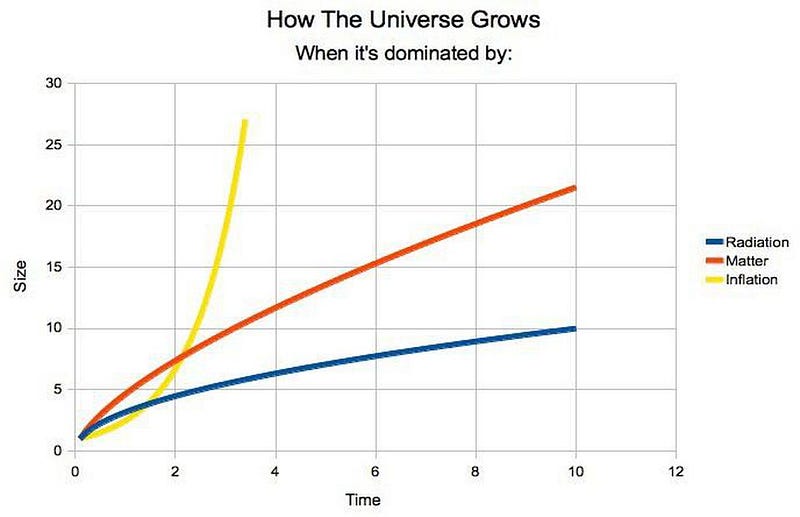
Singularities are where the law of gravitation governing the Universe — Einstein’s General Relativity — yields nonsense for predictions. Relativity, remember, is the theory that describes space and time. But at singularities, both spatial and temporal dimensions cease to exist. Asking questions like “what came before this event where time began” is as nonsensical as asking “where am I” if space no longer exists.
Indeed, this is the argument that many make, including Paul Davies, when they claim that there can be no discussion of what occurred before the Big Bang. This is a tautology, of course, if you assert that the Big Bang is where time began. But as interesting as this argument is, we know that the Big Bang isn’t where time began anymore. Ever since we’ve made modern, detailed measurements of the cosmos, we’ve learned that this extrapolation to a singularity must be wrong.
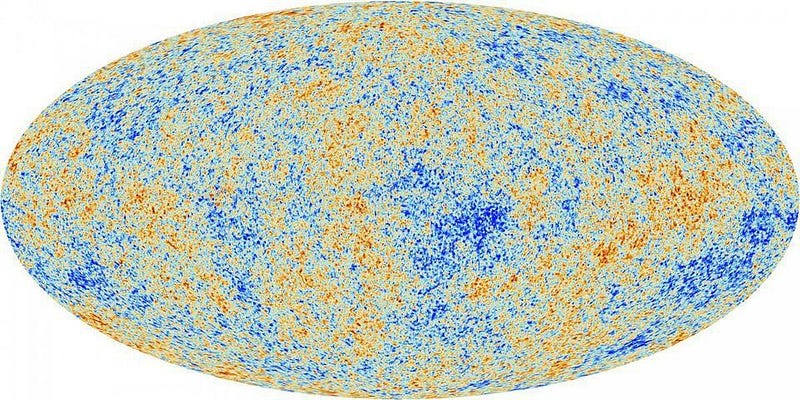
In particular, the patterns and magnitudes of the fluctuations that we’ve discovered in the modern radiation left over from that early, hot, dense state teach us a number of important properties about our Universe. They teach us how much matter was present in dark matter as well as normal matter: protons, neutrons and electrons. They give us a measurement of the Universe’s spatial curvature, as well as the presence of dark energy and the effects of neutrinos.
But they also tell us something vitally important that’s often overlooked: they tell us whether there was a maximum temperature for the Universe back in its earliest stages. According to the data from WMAP and Planck, the Universe never achieved a temperature greater than about 1029 K. This number is enormous, but it’s over 1,000 times smaller that the temperatures we’d need to equate to a singularity.
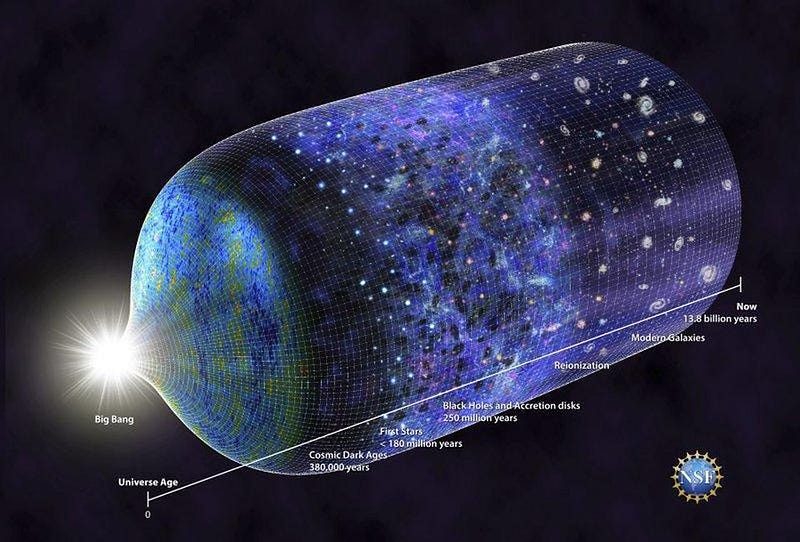
The particular properties of the Universe that are imprinted upon it from the earliest stages provide a window into the physical processes that took place at those times. Not only do they tell us that we cannot extrapolate the Big Bang all the way back to a singularity, but they tell us about the state that existed prior to (and set up) the hot Big Bang: a period of cosmic inflation.
During inflation, there was a tremendous amount of energy inherent to space itself, causing the Universe to expand both rapidly and relentlessly: at an exponential rate. This period of inflation occurred prior to the hot Big Bang, set up the initial conditions that our Universe began with, and left a series of unique imprints that we searched for and discovered after the theory had already predicted them. By any metric, inflation is a tremendous success.
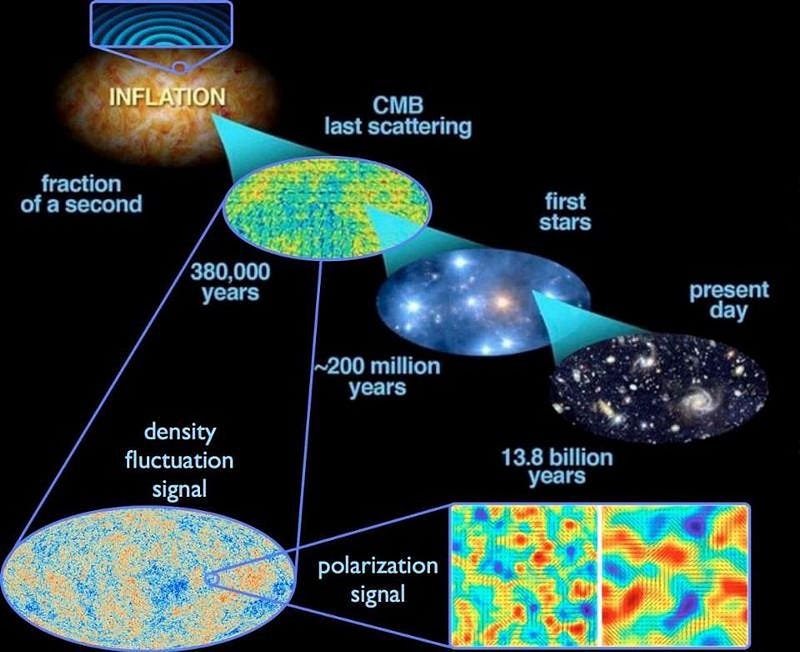
But this severely alters our conceptions of how the Universe began. Earlier, I presented you a graph of how the size (or scale) of the Universe evolved with time. The graph displayed the differences between how the Universe would expand if it were dominated by matter (in red), radiation (in blue), or space itself (such as during inflation, in yellow) at early times. However, I wasn’t completely honest with you in displaying that graph.
You see, I omitted something in the earlier graph, because I truncated it at a positive, finite time. In other words, I stopped the graph before we reached a size of zero. If I were to continue to extrapolate backwards, the matter and radiation curves do indeed reach a singularity at a specific time: t = 0. That would have been where the original idea of the Big Bang occurred. But in an inflationary Universe, you only asymptote to a size of zero; you never reach it. Not at a specific time of t=0, and not at any early time, no matter how far back you go.
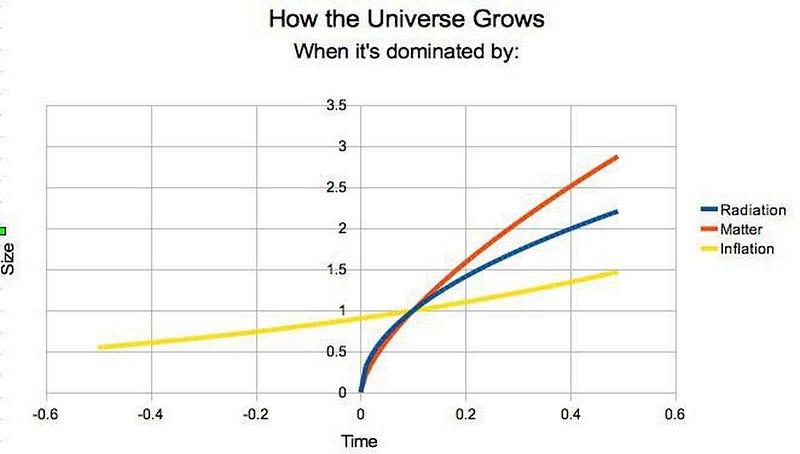
Like many great discoveries in science, this leads to a slew of delightful new questions, including:
- Was the inflationary state a constant one? We do not know whether the Universe inflated at the same rate everywhere, or whether it inflated for long periods of time. If the Universe inflated in ways that changed very quickly from one moment to the next, varying from location-to-location, it might still have the properties we observe it to have today.
- Did the inflationary state last forever, going backwards in time? Inflation certainly has the potential to be an eternal state; we believe in the regions where it doesn’t end in a hot Big Bang, it continues eternally into the future. But could it have also been eternal to the past? With nothing forbidding it, we must consider the possibility.
- Is inflation connected to dark energy, which is also a form of exponential expansion? Although they’re different in scale and magnitude, the early-stage cosmic inflation and the late-stage dark energy both give the same mathematical form for the Universe’s expansion. Are these two stages related, and will our future expansion increase in strength and rejuvenate our Universe, like some sort of cosmic cycle?
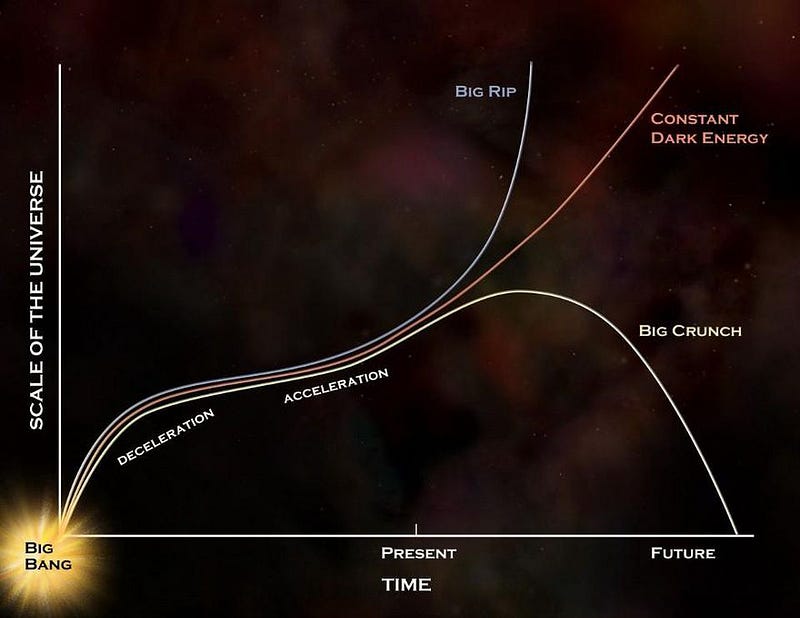
Observationally, we don’t know the answer to any of these questions. The Universe, as far as we can observe it, only contains information from the final 10–33 seconds or so of inflation. Anything that occurred prior to that — which includes anything that would tell us how-or-if inflation began and what its duration was — gets wiped out, as far as what’s observable to us, by the nature of inflation itself.
Theoretically, we don’t fare much better. The Borde-Guth-Vilenkin theorem tells us that all points in the Universe, if you extrapolate back far enough, will merge together, and that inflation cannot describe a complete spacetime. But that doesn’t necessarily mean an inflating state couldn’t have lasted forever; it could just as easily imply that our current rules of physics are incapable of describing these earliest stages accurately.
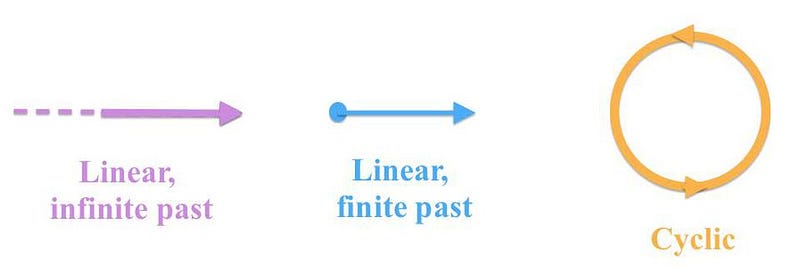
Even though we can trace our cosmic history all the way back to the earliest stages of the hot Big Bang, that isn’t enough to answer the question of how (or if) time began. Going even earlier, to the end-stages of cosmic inflation, we can learn how the Big Bang was set up and began, but we have no observable information about what occurred prior to that. The final fraction-of-a-second of inflation is where our knowledge ends.
Thousands of years after we laid out the three major possibilities for how time began — as having always existed, as having begun a finite duration ago in the past, or as being a cyclical entity — we are no closer to a definitive answer. Whether time is finite, infinite, or cyclical is not a question that we have enough information within our observable Universe to answer. Unless we figure out a new way to gain information about this deep, existential question, the answer may forever be beyond the limits of what is knowable.
Ethan Siegel is the author of Beyond the Galaxy and Treknology. You can pre-order his third book, currently in development: the Encyclopaedia Cosmologica.



